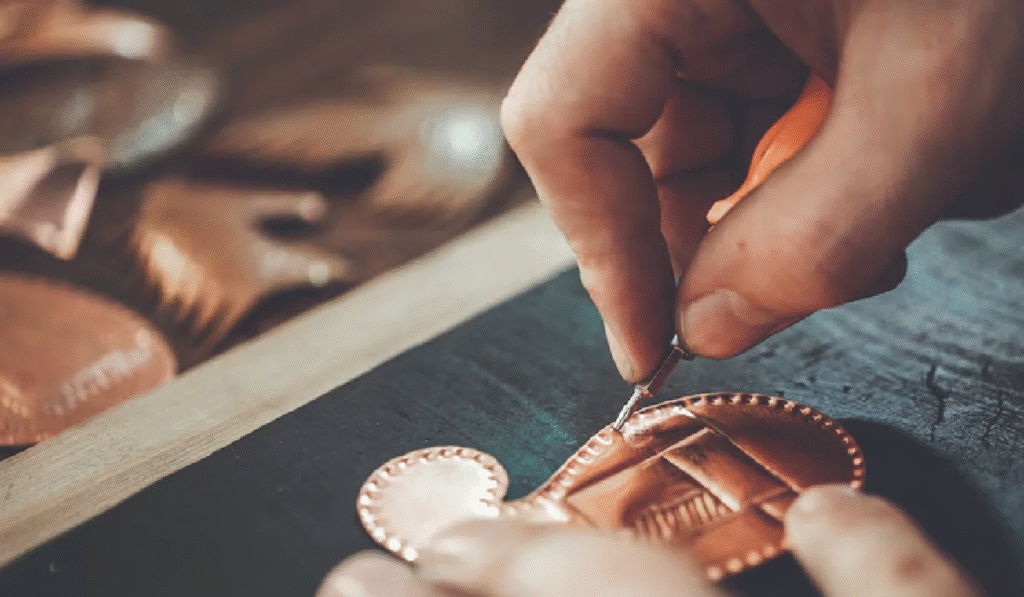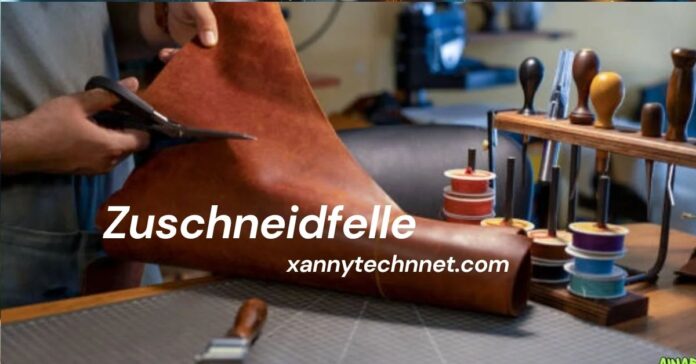Zuschneidfelle, a German term that translates to “cutting skins” or “prepared hides,” refers to skins and hides that have been specially processed and prepared for various practical or decorative purposes. These materials are often used in industries like leather crafting, furniture upholstery, and fashion design. In this comprehensive article, we will dive into the world of zuschneidfelle, explaining what they are, how they are prepared, their various uses, and why they have become a valuable resource in numerous fields.
What are Zuschaundfelle?
Zuschneidfelle, commonly referred to as cutting skins or prepared hides, are skins of animals that have been treated, processed, and cut into specified shapes to meet certain industry requirements. This could include everything from furniture manufacturing, clothing, leather accessories, and even decorative pieces. These skins are typically made from animal hides such as cow, pig, or sheep, though exotic skins like ostrich or alligator can also be used.
The term “zuschneidfelle” originates from the German-speaking region, specifically from the practice of preparing skins for “cutting” in industrial applications. These hides undergo a series of processing steps to ensure that they are ready to be used in manufacturing.

The Process of Preparing Zuschaundfelle
The preparation of zuschneidfelle involves several stages, ensuring that the material is not only durable but also aesthetically pleasing. Let’s break down the process step by step:
- Tanning:
Tanning is the first and most crucial step in the preparation of zuschneidfelle. It involves preserving the animal hide to prevent decay and make the material more durable. The most common tanning methods are vegetable tanning (using plant-based substances) and chrome tanning (using chemicals like chromium salts). The tanning process makes the hide more resistant to water, heat, and wear and tear, extending its lifespan for various uses. - Flesh Removal:
After tanning, the hides are cleaned by removing the remaining flesh and fat from the inner side. This ensures that the skin remains smooth and free from imperfections, which is crucial for use in high-end products like leather goods and furniture. - Also Read: 1212 Angel Number Necklace: A Powerful Symbol of Spiritual Guidance and Alignment
- Drying and Flattening:
Once the hide is thoroughly cleaned, it is dried. Some methods use air drying, while others may employ machines for more even results. The skin is then flattened and stretched to prevent it from shrinking when it’s later cut or processed further. - Cutting and Shaping:
The prepared hides are then cut into specific shapes or sizes depending on their intended use. For example, a leather upholstery manufacturer may need large sheets for furniture coverings, while a fashion designer may request smaller pieces for clothing or accessories. This process ensures that the material is tailored to the needs of the industry. - Finishing:
The final step is the finishing process, which can include dyeing, painting, or adding textures to the hides. For example, some hides may be embossed with unique patterns, while others may be dyed to specific colors to match the design requirements. The finishing stage also adds additional protection to the leather, including water resistance or UV protection.
Types of Zuschaundfelle
Not all zuschneidfelle are created equal, and the type of hide and its processing method can vary greatly depending on the intended use. Here are some common types of zuschneidfelle:
- Leather Hides:
The most commonly used zuschneidfelle are leather hides. These are typically cow or pig skins, which are widely available and suitable for a variety of applications, including footwear, upholstery, and leather accessories. - Sheepskin:
Sheepskin is prized for its softness and warmth, making it ideal for use in fashion products such as jackets, gloves, and hats. Sheepskin is also commonly used in high-end furniture due to its luxurious feel and insulating properties. - Exotic Skins:
Some zuschneidfelle are made from more exotic animals, such as crocodile, alligator, ostrich, and snake. These materials are often used in luxury products, including handbags, wallets, and shoes. Exotic skins are processed with extra care due to their higher value and unique appearance. - Faux Leather:
In response to the demand for cruelty-free alternatives, many manufacturers have developed faux leather or synthetic hides, which are created to mimic the look and feel of natural leather. These alternatives are gaining popularity in the fashion and furniture industries, particularly among eco-conscious consumers.
Uses of Zuschaundfelle
The uses of zuschneidfelle are as varied as the types of hides available. Here are some of the key industries that benefit from this valuable resource:
- Furniture Upholstery:
One of the most common applications of zuschneidfelle is in furniture upholstery. Leather and faux leather are frequently used to cover sofas, chairs, and other furniture pieces due to their durability, ease of cleaning, and aesthetic appeal. Leather adds a touch of elegance and sophistication, making it a popular choice for high-end furniture. - Also Read: MMSVEE24: The Future of Secure Multimedia Messaging
- Fashion and Apparel:
Zuschaundfelle, especially leather and sheepskin, play a crucial role in the fashion industry. Leather jackets, skirts, shoes, bags, and accessories are just a few examples of items that use zuschneidfelle. These materials are prized for their versatility, and skilled artisans can create intricate designs and textures from them. - Automotive Industry:
The automotive industry often uses zuschneidfelle, particularly in the form of leather upholstery for car seats and interiors. Leather offers a luxurious touch and durability, making it a popular choice for high-end vehicles. - Footwear:
Leather hides are commonly used in the production of shoes, boots, and sandals. The material’s resilience, comfort, and ability to be molded into various shapes make it a top choice for footwear manufacturers. - Home Decor:
Hides are also used in home decor products, such as rugs, cushions, and wall coverings. These items can add texture, warmth, and style to living spaces, and they are often available in a variety of colors, textures, and finishes. - Crafting and DIY Projects:
Many DIY enthusiasts use zuschneidfelle in crafting projects, such as making leather wallets, belts, and custom accessories. The material is easy to work with, and its natural appearance adds a rustic charm to handmade items.
Why Choose Zuschaundfelle?
Zuschneidfelle offers several benefits that make it a desirable choice for various industries:
- Durability: When properly processed, zuschneidfelle can last for years, making it a long-lasting material for furniture, apparel, and other products.
- Aesthetic Appeal: The unique textures, patterns, and colors of zuschneidfelle provide a sophisticated look that can enhance the design of any product.
- Versatility: Whether you are working on a high-end fashion piece, custom furniture, or a DIY project, zuschneidfelle can be tailored to suit your specific needs.
- Sustainability: For those looking to make environmentally conscious choices, faux leather options are available, offering a cruelty-free alternative without compromising on style.
- Also Read: Ford VCI Software JRE Version: A Complete Guide for 2025
FAQs About Zuschaundfelle
What is the difference between zuschneidfelle and regular leather?
Zuschaundfelle refers specifically to hides that have been pre-processed and cut for industrial use. Regular leather, on the other hand, may not have undergone the same cutting and shaping procedures and might be used in its raw form.
Can zuschneidfelle be used for outdoor furniture?
Yes, zuschneidfelle can be treated to be weather-resistant, making it suitable for outdoor furniture. Some finishes offer added protection against UV rays and moisture.
How do I care for products made from zuschneidfelle?
Depending on the type of zuschneidfelle, products may require regular conditioning and cleaning to maintain their softness and appearance. It’s essential to follow care instructions specific to the type of leather or material used.
Is zuschneidfelle eco-friendly?
While traditional zuschneidfelle comes from animal hides, there are synthetic alternatives available that are cruelty-free and more environmentally friendly. Always check for eco-friendly certifications when purchasing.
Where can I buy zuschneidfelle?
Zuschaundfelle can be purchased from leather suppliers, specialty craft stores, and online retailers. Ensure you are purchasing from a reputable source to guarantee the quality of the material.
Conclusion
Zuschneidfelle are a vital part of various industries, from fashion to furniture. The preparation and use of these materials involve careful craftsmanship and processing to ensure that they meet the high standards of durability, aesthetics, and functionality. Whether you’re a leather artisan, fashion designer, or furniture manufacturer, zuschneidfelle offers a versatile and reliable resource for creating quality products that stand the test of time.
By understanding the preparation, types, and uses of zuschneidfelle, you can make informed decisions about its applications and how it can best serve your needs. Whether you’re crafting a luxurious leather jacket or upholstering a sophisticated piece of furniture, zuschneidfelle remains a top choice for many industries.
